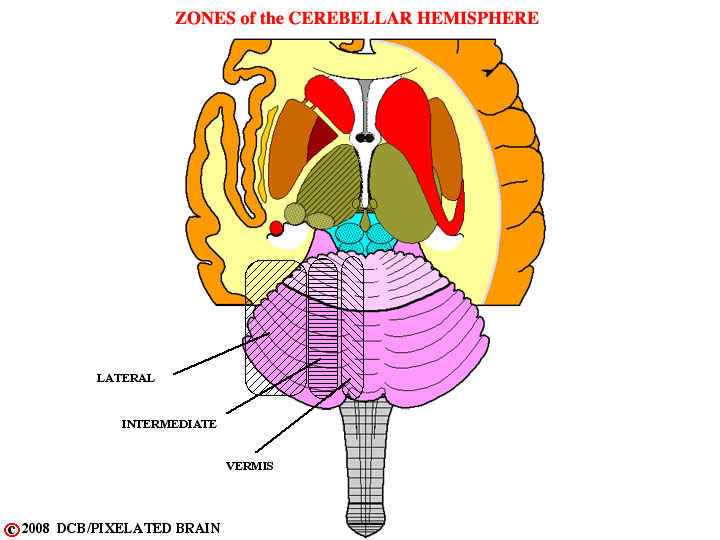
PIXBRAIN HOME _ _ MOD 6 HOME _ _ previous _ _ FIGURE 6-6_ _ next _ _ I WANT TO
The cerebellum is divided into lateral, intermediate and vermal zones. Each projects to its own set of deep nuclei, and the function carried out by each zone is distinct from that of the others. This view shows these divisions,drawn on a surface view of the cerebellum.
_____1. The lateral hemisphere or cerebrocerebellum, which receives its input from the contralateral cerebral hemisphere, projects back to this same structure and is involved in motor planning.
_____2. The intermediate (paramedian) region or spinocerebellum which receives inputs both from the contralateral cerebral hemisphere and the ipsilateral spinal cord. This region is concerned with the adjustment of motor activity involving the distal parts of the body
_____3. The midline region or vermis. This region actually carries out two rather different functions. It shares with the intermediate region the job of adjusting motor activity, in this case involving proximal and axial muscles. Parts of the vermis, however, have reciprocal connections with the vestibular nuclei. This subdivision of the vermis is termed the vestibulocerebellum and is concerned with monitoring and adjusting vestibular reflexes.
Each region of the cerebellar cortex projects out of the cerebellum by way of its own "deep" nucleus. Kingsley's Figure 9.3 summarizes much of this information.